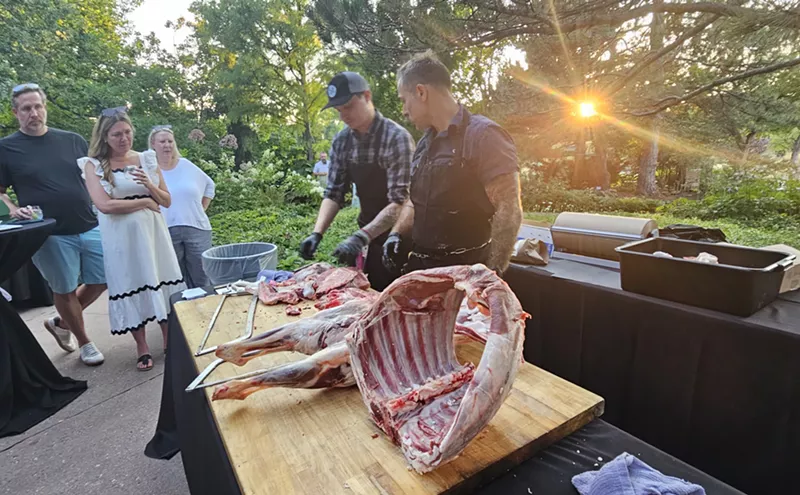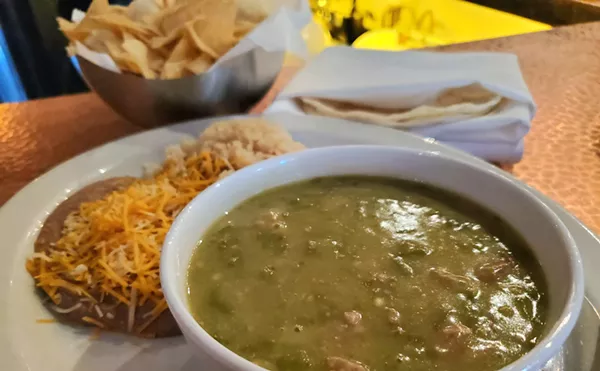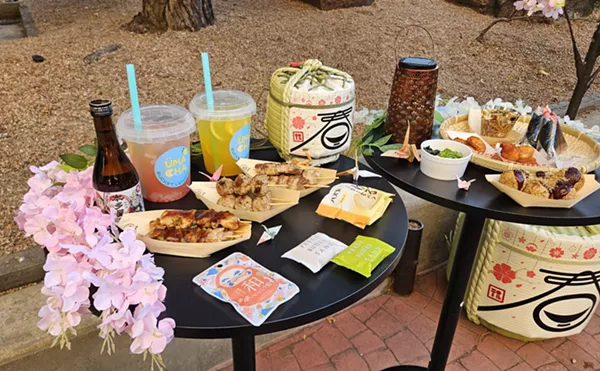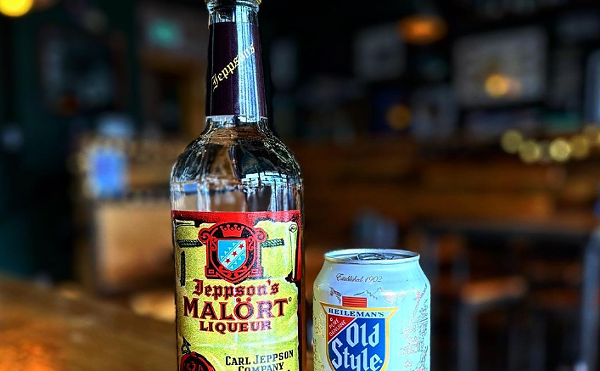Even though there are plenty of places where you can find a pot brownie in this town, sometimes you want something tasty that's not easy to find in an adult-use or medical dispensary...vegan ice cream, perhaps, or gluten-free chocolate cake. If that's the case, you're in for hours of prep to just get the infused product ready, then strain it — and only after all that can you even think about starting your baking project.
It's
The brainchild of local food scientist Brandon Shepherd — who started his career in the food industry making Hot Pockets — the Mota Pot is based on an ancient infusion technique. Shepherd got the idea for the Mota Pot when he trIed making a twelve-pack of frozen medicated cookies
So Shepherd started looking for a stovetop infuser that worked like the infuser he'd used as a food scientist. After digging and digging, he finally found a kitchen supplier that makes a unit similar to the one he remembered — and then the research started. As far as Shepherd could determine, nobody had used one of these units to infuse butter or oil with cannabis before, so he put on his food=scientist hat and started experimenting to find the very best method for getting from point A to point B.
Infusing oil with the Mota Pot requires one additional step, decarboxylation, which primes the cannabis for infusion. After grinding the product in a grinder and arranging it in a level layer in a baking pan, you
These instructions confuse a lot of consumers who have infused products before — because don't you start losing potency after the product is heated? But listen to the food scientist: He notes that the live cannabis plant contains an acid known as THC-A (
So decarboxylation is a crucial step prior to using the Mota Pot, and it's one that consumers who think they know better might skip. "The decarboxylation is a must for every extraction," Shephard says. "I did several experiments with the Mota Pot and tested all the results, so the method that we outline on our website seems to yield the best results, analytically speaking."
After decarboxylation, which involves about an hour of hands-off, no-mess time, you can fire up the Mota Pot — and it's impressive how fast the process is.
We filled the bottom chamber of the Mota Pot with 1/2 cup of coconut oil — you can also use one stick of butter if you're so
Then we filled the inset chamber with ground, decarboxylated product. There's a handy line on the side that indicates where to stop.
We filled with chamber with the coconut oil flush to the top with cannabis, screwed the top back on the Mota Pot, then put it on the stove over medium-low heat and waited until we heard popping. It was time to pour the contents into a measuring cup — no straining involved, beyond that done by the Mota Pot.
After some time in the fridge, it was time to separate the oil from the water, which was as easy as poking two holes through the oil at the top and pouring out the water.
It was by far the easiest, most painless process we've ever used to make a cannabis-infused product. And it was
Shepherd also sells baking mixes that can be used with the infusions made with the Mota Pot, but we made a pan of homemade brownies instead.
Shepherd has also patented a high-temperature, food-grade plastic, disposable liner that dispensary owners can fill and sell — sort of like pods for those ubiquitous one-cup coffee machines. "The concept is that you'll buy these prepackaged cups from the dispensary," he explains. "And I did the math — if dispensaries decarboxylate trimmings and sell them instead of sending them off for extraction, it's a much better deal for them." If dispensaries catch on, the hands-on time for the user would be reduced to between five and ten minutes.
Order your own Mota Pot with baking mixes at motapot.com. The unit itself costs $49.99, and Shepherd ships directly to your home.As the becomes aware of the product — and its ease of use — he hopes that dispensaries will sell it, too.












